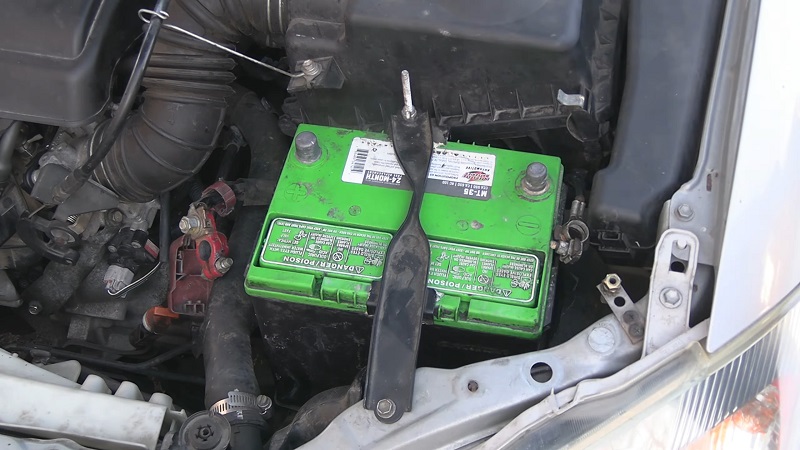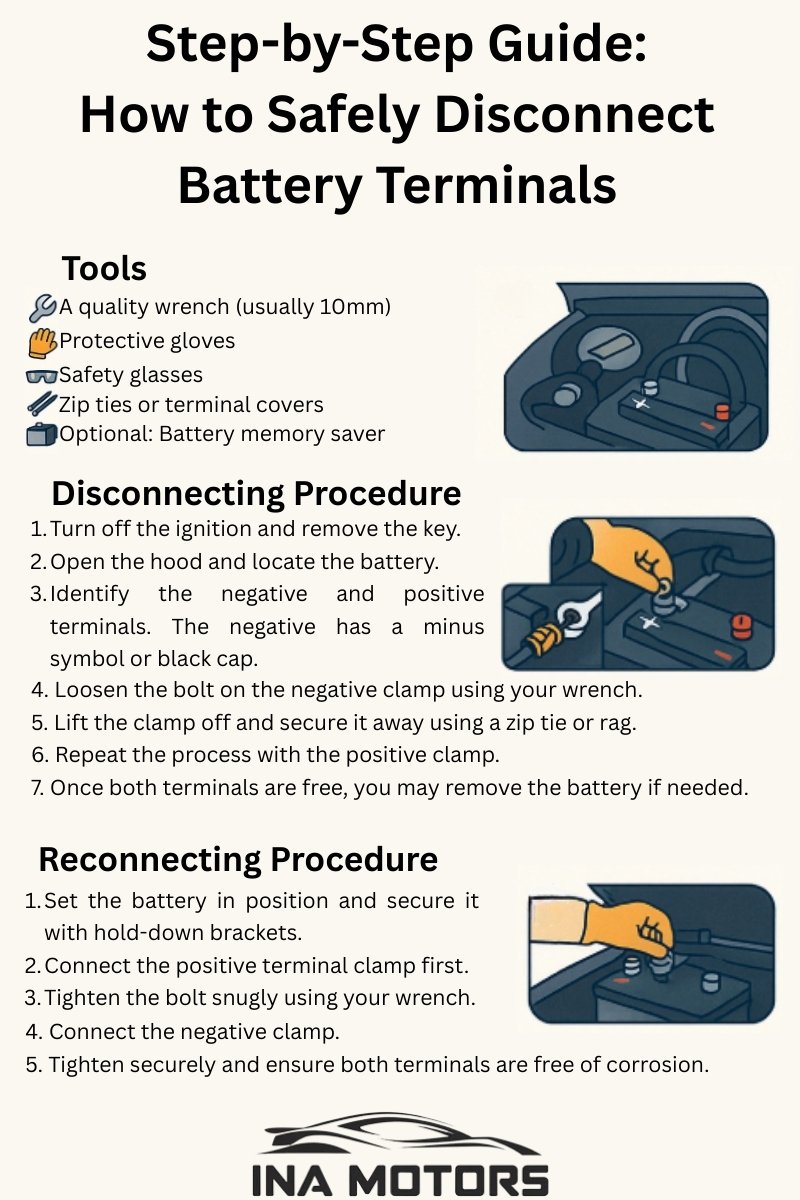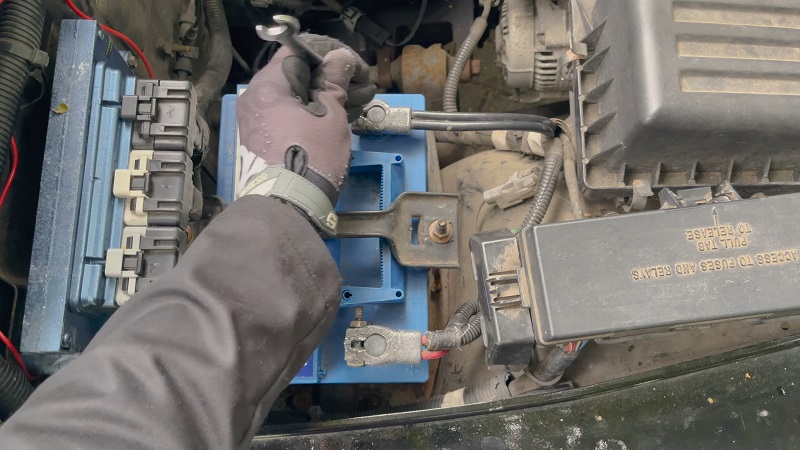Disconnecting the battery terminals in a vehicle is one of the most overlooked yet essential procedures for vehicle safety and maintenance. Car owners, mechanics, and even seasoned drivers often face situations that involve interacting with a car battery.
Improper handling can damage electrical systems, cause physical injuries, or result in costly repairs. Knowing when, how, and why to disconnect the battery terminals can prevent those risks and extend your vehicle’s lifespan.
What Happens When You Disconnect Battery Terminals?
Battery terminals serve as the connection points between your vehicle’s electrical system and the power source. Disconnecting the terminals cuts off that power. This stops the flow of electricity, which protects electronic modules, eliminates shock risk, and prevents any active electrical circuits.
Every modern vehicle comes with sensitive electronics—ECUs, sensors, infotainment units, airbags, anti-theft systems. These systems depend on a steady and uninterrupted flow of current. A sudden jolt, static discharge, or short surge during repairs can cause permanent failure. Disconnecting the battery neutralizes those risks.

Why Should You Disconnect the Battery?
Metal tools near a live battery can bridge the terminals or touch exposed wiring. That creates a short circuit, which leads to sparks, burns, melted wires, or worse—fire. Disconnecting the terminals ensures there’s no current to complete any unwanted circuit.
If you are replacing or repairing any component near the engine or connected to its wiring harness, an accidental crank can cause serious injury. Disconnecting the battery makes accidental ignition impossible.
Modern vehicles contain up to 100 control modules, all controlled by microprocessors. Voltage spikes can damage or erase memory on those modules. Before working on any component connected to wiring or fuse boxes, disconnect the battery first.
Alternators, starters, and sensors are linked directly to the battery. Removing or installing them while the terminals are live can result in a sudden surge or contact burn.
When to Disconnect Battery Terminals
1. Long-Term Storage
If a vehicle sits unused for weeks or months, parasitic drains from the clock, security system, or other electronics can slowly discharge the battery. Disconnecting the battery prevents complete discharge and preserves the charge for future use.
2. Electrical Repairs
Any repair involving fuses, sensors, lighting systems, wiring harnesses, or control modules requires battery disconnection. That includes minor fixes like replacing interior lights or installing an audio system.
3. Collision Recovery
After an accident, disconnecting the battery helps ensure no circuit reactivates airbags or ignites wires. Repair personnel always remove the battery connection before inspecting a damaged vehicle.
4. Preventing Theft or Tampering
Vehicles parked in unfamiliar areas or under extended risk benefit from terminal disconnection. Without battery power, the car cannot start, and anti-theft systems stay dormant.
Which Terminal to Disconnect First?
Always Disconnect the Negative Terminal First
Removing the negative terminal first prevents the risk of completing a circuit through your tool or body. The negative terminal is grounded to the vehicle frame. If a wrench touches the frame during its removal, no current flows.
Never Disconnect the Positive First
If the positive terminal comes off first and your tool touches metal parts of the vehicle, a complete circuit forms, which causes sparks or burns.
Reconnect in Reverse Order
Connect the positive terminal first when reconnecting. Then connect the negative. This sequence restores power without any spark or surge.
Step-by-Step Guide: How to Safely Disconnect Battery Terminals

Tools You Need
- A quality wrench (usually 10mm)
- Protective gloves
- Safety glasses
- Zip ties or terminal covers
- Optional: Battery memory saver (to keep presets in memory)
Disconnecting Procedure
- Turn off the ignition and remove the key.
- Open the hood and locate the battery.
- Identify the negative and positive terminals. The negative has a minus symbol or black cap.
- Loosen the bolt on the negative clamp using your wrench.
- Lift the clamp off and secure it away using a zip tie or rag.
- Repeat the process with the positive clamp.
- Once both terminals are free, you may remove the battery if needed.
Reconnecting Procedure
- Set the battery in position and secure it with hold-down brackets.
- Connect the positive terminal clamp first.
- Tighten the bolt snugly using your wrench.
- Connect the negative clamp.
- Tighten securely and ensure both terminals are free of corrosion.
Common Myths About Battery Terminal Disconnection
“It Resets Everything”
Only partial truth. Disconnecting the battery resets some modules, such as clock, radio presets, or fuel trims. But many systems store data in non-volatile memory. That includes the mileage counter, immobilizer codes, or VIN-matching functions.
“You Only Need to Remove One Terminal”
Only the negative terminal needs to be disconnected to cut off power. Removing both is often unnecessary unless you are removing the battery completely or cleaning it.
“You Can Touch Battery Terminals With Bare Hands”
Direct contact with skin may not electrocute, but oils, moisture, and static discharge can affect terminals. Use gloves when handling the terminals for both safety and hygiene.
Risks of Not Disconnecting the Battery

Fire Hazards
Short circuits caused by a live wire can ignite plastic casings, insulation, or surrounding materials. Engine bays house fuel lines, which makes this risk deadly.
Permanent Module Damage
If a charged circuit is bridged during sensor replacement, high current may fry the ECU or TCU. That damage leads to costly replacements that cannot be easily reprogrammed.
Electrical Shock
Low-voltage batteries do not kill, but shocks can cause you to drop tools, fall, or pull back in a reflex that causes injury.
Battery Maintenance Tips
- Clean Terminals Monthly: Dirt and corrosion lead to poor contact and reduce charging efficiency.
- Use Dielectric Grease: Apply a small amount to each terminal to repel moisture.
- Check Voltage Regularly: A healthy battery should read 12.6 volts or more when fully charged.
- Secure the Battery: A loose battery bounces during motion, causing internal damage or terminal cracks.
Alternatives to Disconnecting the Battery
Use a Memory Saver
A memory saver plugs into the OBD-II port or cigarette lighter socket and retains settings during maintenance. Always ensure it uses reverse polarity protection.
Use a Battery Isolator Switch
Installed between the battery terminal and clamp, this switch allows quick disconnection without using tools. Ideal for classic cars or RVs.
How Long Can You Leave the Battery Disconnected?
A disconnected battery holds its charge for weeks or months, depending on its condition. Older batteries lose charge faster. Store it in a cool, dry place away from metal contact. If stored in the car, ensure the cables are safely away and cannot touch the terminals.
Special Precautions for Hybrid and Electric Vehicles
Hybrid and electric vehicles use high-voltage systems and a separate 12V battery for accessories. Never disconnect or service the battery without consulting the manufacturer’s guidelines. Some systems require dealer-level tools to shut off high-voltage contactors safely. In some models, only trained personnel should perform disconnection due to stored energy in capacitors and modules.
Conclusion
Disconnecting the battery terminals serves as one of the most essential precautions in automotive maintenance. It prevents electrical damage, preserves sensitive electronic modules, and ensures user safety. Every vehicle owner should know the proper steps, tools required, and risks involved. Pay attention to terminal order, storage conditions, and possible alternatives like isolator switches.
For long-term vehicle health and safe handling practices, keep battery terminal disconnection at the top of your checklist. A few extra minutes can protect your investment, reduce future breakdowns, and keep every electrical component secure.
Read Next – How Often Should You Change Your Car’s Air Filter?
